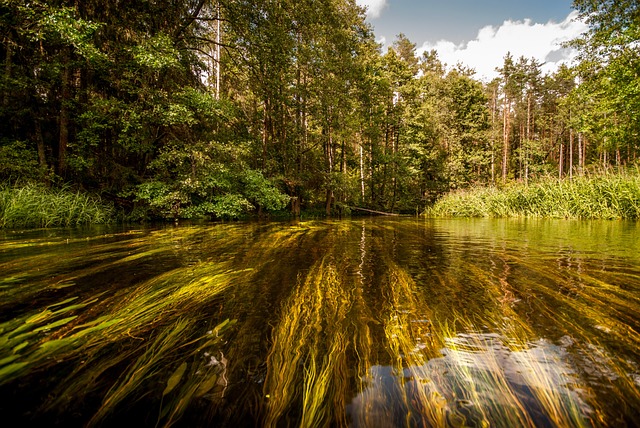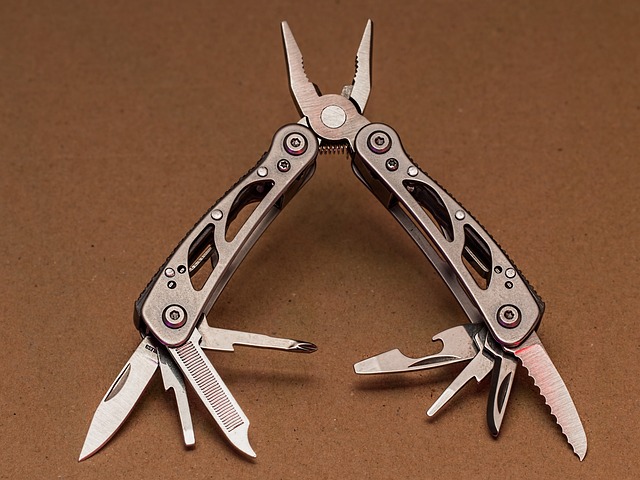Flashlights for hunting and survival situations are essential tools for nighttime predator hunting, offering a balance between illumination and stealth. The best models feature advanced LED technology that provides both focused beam capabilities for target identification at distance and broader floodlight settings for comprehensive area awareness. Adjustable light output allows hunters to customize their visibility needs without disturbing wildlife, while tinted lenses help reduce glare and reflections that might otherwise reveal the hunter's position. These flashlights are powered by reliable battery systems to ensure extended use in remote locations. Additional features such as adjustable colors, focusing mechanisms, and accessories like red filters or infrared illuminators enhance their effectiveness in different environments and conditions, making them indispensable for both detection and interaction with nocturnal predators while maintaining safety and preserving the natural darkness of the surroundings.
When the night cloaks the wilderness, a tactical light becomes an indispensable ally for predator hunters. This article sheds light on the critical role of flashlights in hunting, emphasizing their significance beyond mere illumination. We’ll explore the essential features that distinguish a reliable hunting flashlight from its survival counterparts, dissecting the anatomy and technology behind high-quality options. From LED types that enhance nighttime detection to power management for extended expeditions, each aspect is scrutinized to ensure your tactical light serves as more than just a beacon—it’s a tool for success in the unforgiving terrain where predators reign. Strategic placement, light dispersion, focusing capabilities, and key accessories are also examined to arm you with knowledge for optimal predator hunting outcomes. Whether braving the wilderness or preparing for survival scenarios, flashlights for hunting and survival situations are not just a convenience; they’re your vision in the dark.
- Understanding the Role of Tactical Lights in Predator Hunting
- Key Features to Look for in a Tactical Light for Predator Hunting
- The Anatomy of a High-Quality Hunting Flashlight
- Types of LEDs and Their Impact on Nighttime Predator Detection
- Battery Life and Power Management for Long Hunts
- Strategic Placement of Tactical Lights in Predator Setups
- The Importance of Light Dispersion and Focusing Capabilities
- Accessorizing Your Tactical Light for Optimal Predator Hunting
Understanding the Role of Tactical Lights in Predator Hunting

Tactical lights have become indispensable tools in the arsenal of predator hunters, serving as a beacon in the darkness that naturally envelopes the wild during nighttime hours. These high-intensity flashlights for hunting and survival situations illuminate the nocturnal environment with a clarity that allows hunters to identify, track, and ultimately hunt predators with precision and efficiency. The role of tactical lights extends beyond mere visibility; they enable hunters to discern subtle details in their surroundings, from an animal’s body language to the terrain underfoot. This acuity is crucial for ethical hunting practices, ensuring that hunters can distinguish between game and non-target species, as well as for safety, preventing accidental encounters with wildlife or fellow humans.
Furthermore, tactical lights for predator hunting are not merely about brightness; they often come equipped with various settings, such as red or green light options, which preserve night vision while providing a focus point for the hunter’s gaze. The durability and robust construction of these flashlights for hunting and survival situations mean they can endure the rigors of outdoor use, from harsh weather conditions to rough handling during tracking. Selecting the right tactical light involves considering factors like beam distance, luminosity, battery life, and weight—all critical elements that can make the difference between a successful hunt and an unsuccessful one. Flashlights designed for hunting and survival not only enhance the hunter’s capabilities but also respect the natural environment by minimizing disruption to wildlife.
Key Features to Look for in a Tactical Light for Predator Hunting
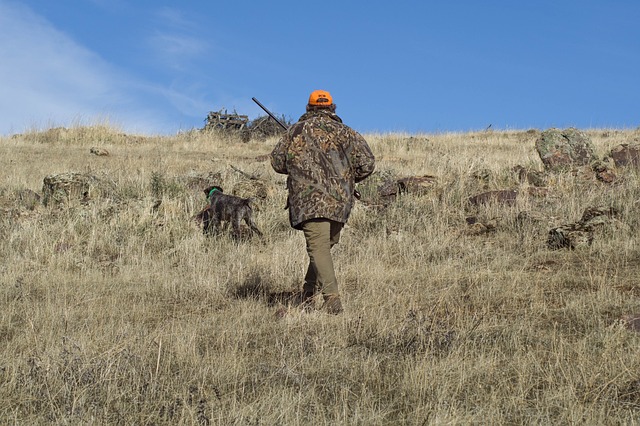
When selecting a tactical light for predator hunting, several key features should be at the forefront of your decision-making process to ensure both effectiveness and safety in the field. Firstly, consider the lumens output; a high lumen rating indicates a bright beam, which is crucial for illuminating dark environments and potentially startling or disorienting prey. A light with a variable zoom or focus capability allows you to adjust the intensity and beam distance, providing versatility in various hunting scenarios. Additionally, the light’s body should be constructed from durable materials like aircraft-grade aluminum or high-impact polymer to withstand the rigors of outdoor use and harsh conditions.
Secondly, a tactical light designed for predator hunting must have a robust construction to endure drops, bumps, and weather exposure without failing. Look for features such as waterproofing (IPX8 rating or higher), which ensures the light can operate even when submerged underwater. A tactical switch, typically located on the head of the flashlight, allows for momentary activation, which is beneficial when scanning the environment or when you need to quickly shift between different focal points. Furthermore, a rechargeable battery with a long runtime, coupled with a reliable charging system, will minimize downtime during extended hunting trips. Flashlights For Hunting And Survival Situations should be compact and lightweight enough to carry easily without compromising on power or brightness, making them indispensable tools for any predator hunter.
The Anatomy of a High-Quality Hunting Flashlight

When venturing into the wild for predator hunting, a high-quality hunting flashlight is an indispensable tool that extends beyond mere illumination. A top-tier hunting flashlight designed for such scenarios, like those in the Flashlights For Hunting And Survival Situations category, often features a robust construction to withstand the harsh environmental conditions typically encountered in natural settings. It is crafted from durable materials such as aircraft-grade aluminum or high-impact polymer, ensuring longevity and resilience against drops, water, and dust intrusion.
The beam quality of these flashlights is paramount; they employ advanced LED technologies that offer a balanced throw and flood, allowing hunters to identify targets at a distance while also illuminating the surrounding area for situational awareness. The light output is typically adjustable, offering various modes from a bright, focused beam for long-range identification to a lower lumen setting for less intrusive, longer duration lighting. This adaptability enables hunters to switch between modes without alerting or distressing prey. Additionally, these flashlights are often equipped with tinted lenses that minimize glare and reflections, which could otherwise give away the hunter’s position. A dependable battery system, with either rechargeable or disposable options, ensures that the light source remains operational for the duration of the hunt, providing both visibility and a tactical advantage in the predator’s natural habitat.
Types of LEDs and Their Impact on Nighttime Predator Detection

When it comes to predator hunting, particularly at night, tactical lights serve as invaluable tools for detection and identification. The types of LEDs used in flashlights for hunting and survival situations can significantly impact the effectiveness of a hunter’s nighttime endeavors. LED technology has advanced to offer a range of options, each with its own spectrum of light output and color temperature that can influence the clarity and distance at which predators are visible.
For instance, high-intensity LEDs, such as those emitting in the white or near-infrared spectrum, are ideal for cutting through the darkness without spooking game. These LEDs provide a crisp, bright light that can illuminate targets at a distance while preserving the hunter’s night vision. Additionally, LEDs with a high rate of lumens per watt offer energy efficiency and longer battery life, which are crucial in remote hunting situations where carrying additional batteries might not be feasible. The choice between single LED lights for focused illumination or multiple LEDs for a broader, floodlight effect depends on the hunter’s needs and the environment they are navigating. Advanced models may even incorporate red, green, or blue LEDs that can enhance visibility in different scenarios, allowing for versatility across various hunting conditions. Flashlights For Hunting And Survival Situations must be selected based on their LED specifications, as these directly affect how effectively a hunter can detect and engage with nighttime predators.
Battery Life and Power Management for Long Hunts
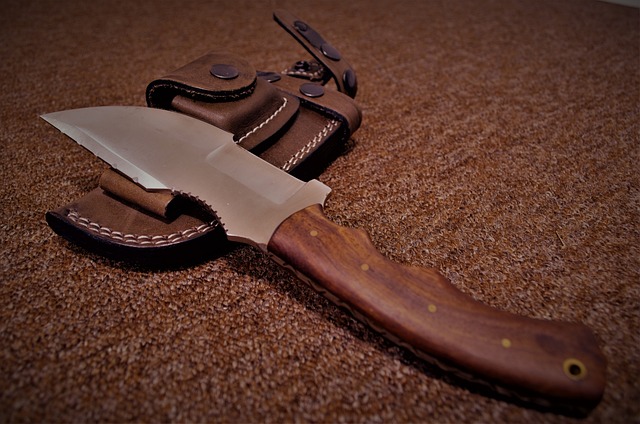
Strategic Placement of Tactical Lights in Predator Setups
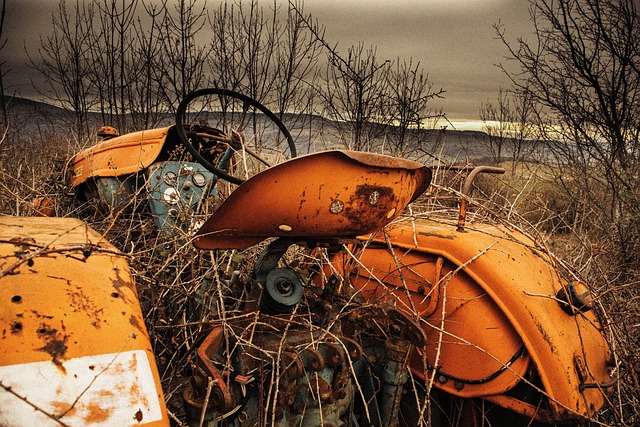
The Importance of Light Dispersion and Focusing Capabilities

When engaging in predator hunting, particularly under the cover of night, a tactical light becomes an indispensable tool for discerning details and ensuring precision in every shot. The importance of light dispersion cannot be overstated; it allows hunters to scan vast areas without washing out the environment with harsh illumination that could spook nocturnal prey. A high-quality tactical flashlight for hunting and survival situations offers a beam that can be dispersed across a wide field, effectively extending the hunter’s vision while maintaining an adaptable level of brightness that respects the natural darkness. This feature is crucial when attempting to observe predators in their natural habitat without disturbing them, as a sudden beam could lead to flight or aggressive behavior.
In contrast, the focusing capabilities of tactical lights are equally significant. They enable users to transition from a wide-angle floodlight for area surveillance to a tightly focused spotlight for target identification at greater distances. This versatility is key when assessing potential threats or studying animal behavior in detail. The ability to quickly switch between dispersed and focused light modes can make the difference between a successful hunt and an unsuccessful one. Flashlights designed for hunting and survival situations often come with advanced optics, allowing users to manipulate light into precise patterns, which is particularly useful when navigating through varied terrains or dealing with different hunting scenarios. The focusing mechanism should be smooth, responsive, and securely locked at the desired setting, ensuring that hunters can rely on their tactical light’s performance in any situation.
Accessorizing Your Tactical Light for Optimal Predator Hunting

When engaging in predator hunting, having a tactical light is not just beneficial; it’s an indispensable tool for enhancing visibility and ensuring safety both for the hunter and the prey. Flashlights for hunting and survival situations are designed to provide illumination without compromising your natural night vision or giving away your position. To maximize the effectiveness of your tactical light in this specific context, consider accessorizing it with specialized lenses or filters that can amplify its capabilities. For instance, a red filter can help you see better in low-light conditions without affecting the predator’s nocturnal vision, allowing for more natural behavior and less spooking of the animals. Additionally, incorporating an infrared (IR) flashlight or an IR illuminator can enable nighttime hunting with a device that is undetectable to the human eye but visible to many predators. This technology is particularly useful when hunting with a camera, as it can capture natural animal behavior without the interference of artificial light.
Accessorizing your tactical light also means considering the environment in which you’ll be hunting. If you’re operating in an area with dense foliage or brush, a diffused lens or a focusable beam can help you illuminate your target without harsh shadows or glares. For those who prefer hands-free operation, a headlamp or helmet-mounted flashlight can free up your hands while keeping the light exactly where you need it. Moreover, integrating a high-capacity battery or power source ensures that your tactical light remains operational throughout your hunting expedition, eliminating the risk of a sudden blackout at a critical moment. By carefully selecting and configuring these accessories, your flashlight for hunting and survival situations will become an unparalleled asset in your predator hunting endeavors.
When venturing into the nocturnal realm of predator hunting, the strategic deployment of a tactical light becomes an indispensable tool for any hunter. A high-quality hunting flashlight, designed with the right features and LED technology, not only aids in detecting prey but also enhances the overall safety and efficacy of the hunt. Key aspects such as battery longevity, focused beam capabilities, and accessory options for various scenarios are crucial considerations for any outdoor enthusiast. By understanding the anatomy of a robust flashlight and the types of LEDs that best suit nighttime predator detection, hunters can ensure they have a reliable companion in their pursuit of game. For those prepared to face the challenges of survival situations, flashlights for hunting serve as a beacon of insight and precision, making them an essential addition to any hunter’s arsenal.
